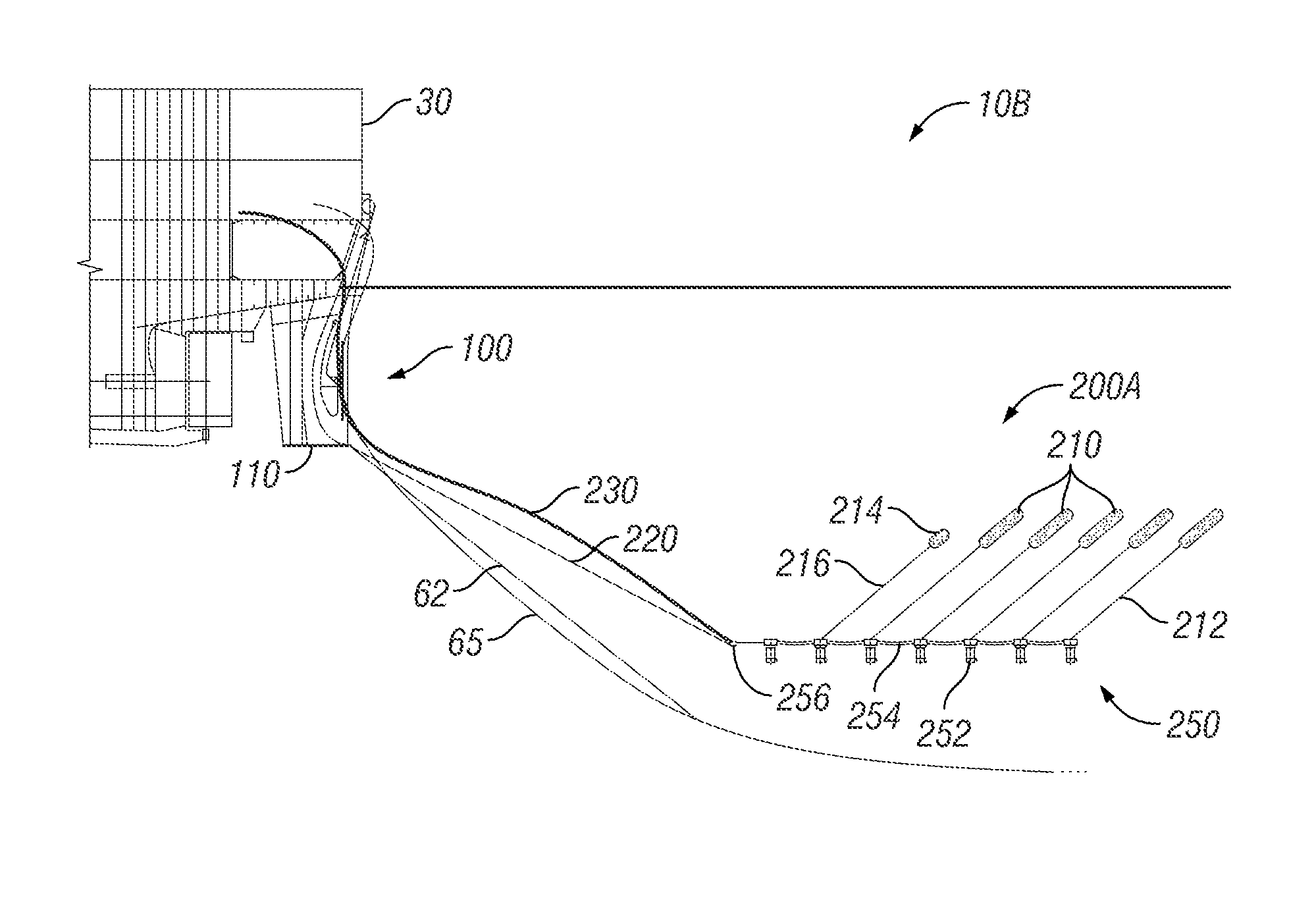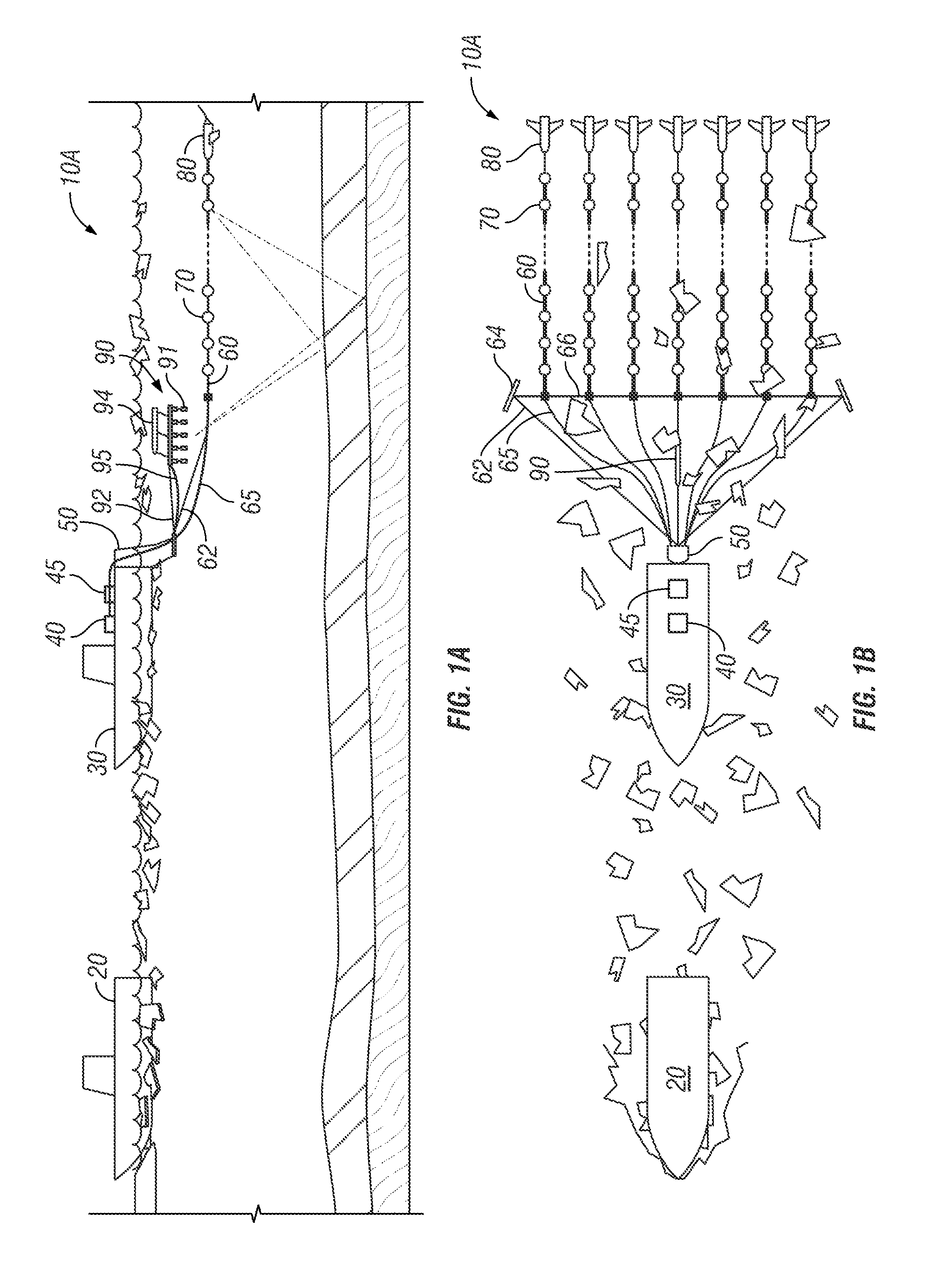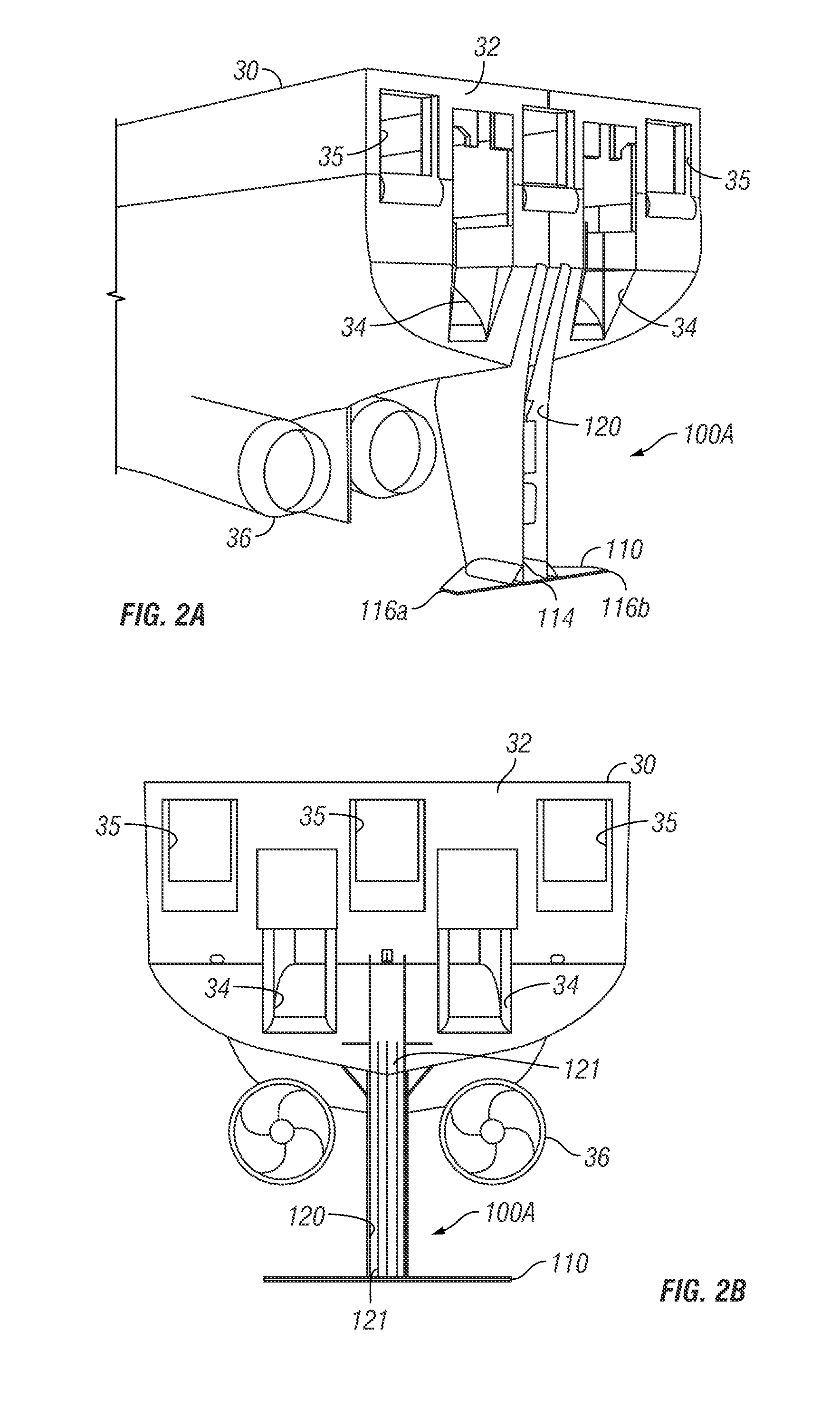Marine seismic surveying in icy or obstructed waters
a technology of ice or obstructed waters and seismic surveying, which is applied in the field of marine seismic surveying, can solve the problems of prone to damage, difficult to produce seismic records, and expensive, and achieves the effects of reducing the risk of accidents, reducing the safety of the vessel, and increasing the difficulty of towing the source and streamer
- Summary
- Abstract
- Description
- Claims
- Application Information
AI Technical Summary
Benefits of technology
Problems solved by technology
Method used
Image
Examples
Embodiment Construction
[0054]A. Marine Seismic Survey System
[0055]A marine seismic survey system 10A in FIGS. 1A-1B can be used in icy regions having glacial ice, pack ice, and ice floes. However, elements of the system 10A can be used in other locations having debris, plants, flotsam, jetsam, or other obstructions or obstacles at the water's surface that can interfere with towed components of the marine seismic survey system.
[0056]For icy regions, the system 10A preferably includes an icebreaker vessel 20 that breaks ice in advance of a tow vessel 30. In operation, the icebreaker vessel 20 breaks pack ice and diverts ice floes to create a tract for passage of the tow vessel 30. As the tow vessel 30 tows one or more streamers 60, a supply system 45 operates a source 90, and a control system 40 having a seismic recorder records the seismic data obtained with sensors 70 on the streamers 60.
[0057]Because the tow vessel 30 operates in icy or obstructed waters, a protective device 50 on the tow vessel 30 coupl...
PUM
 Login to View More
Login to View More Abstract
Description
Claims
Application Information
 Login to View More
Login to View More - R&D
- Intellectual Property
- Life Sciences
- Materials
- Tech Scout
- Unparalleled Data Quality
- Higher Quality Content
- 60% Fewer Hallucinations
Browse by: Latest US Patents, China's latest patents, Technical Efficacy Thesaurus, Application Domain, Technology Topic, Popular Technical Reports.
© 2025 PatSnap. All rights reserved.Legal|Privacy policy|Modern Slavery Act Transparency Statement|Sitemap|About US| Contact US: help@patsnap.com



